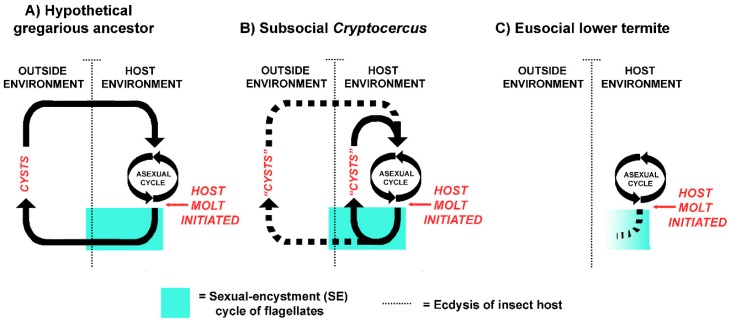Figure 2.
Sexual-encystment cycles of the flagellates in molting individuals of: (A) a hypothetical gregarious cockroach ancestor, (B) the subsocial cockroach Cryptocercus, and (C) eusocial lower termites. The symbiont-host relationship logically evolved in sequence, along with shifts in host social behavior, from a distant gregarious cockroach ancestor, to a subsocial Cryptocercus-like ancestor, to eusocial termites [18]. In both Cryptocercus and termites, the SE cycle has degenerated from the strong encystment pattern likely shown by an ancestor, but in both taxa, protistan numbers and functions are reliably restored after molt, albeit in different ways (retention of protists in individuals of Cryptocercus, anal trophallaxis from nestmates in termites). Neither Cryptocercus nor termite protists currently have a functional relationship with the external environment. Inspired by Weedall and Hall ([103] Figure 1).

